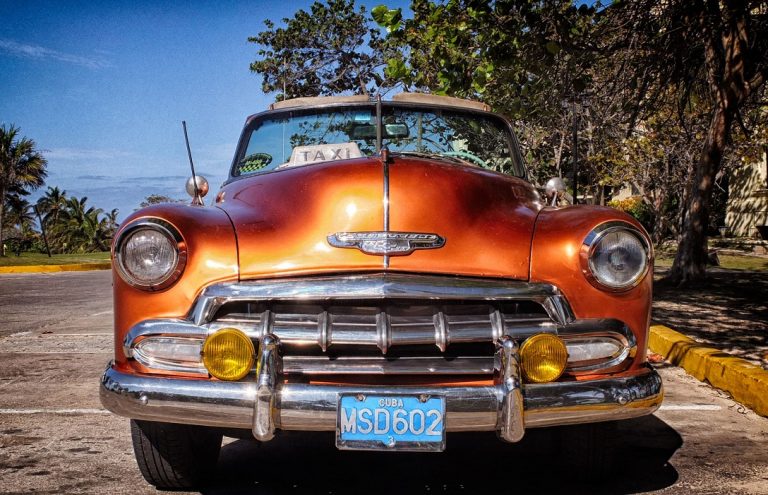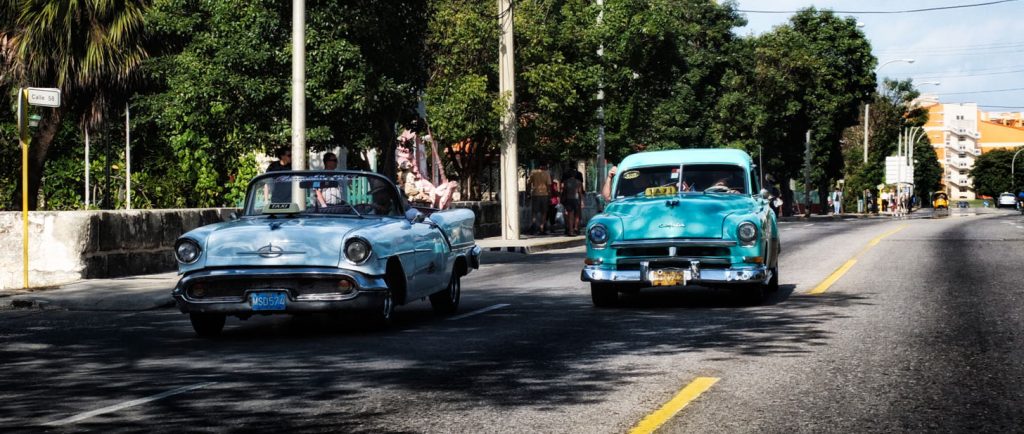Cuba is literally a rolling car museum. Everywhere you look is an old-school American brand vehicle. From Oldsmobile to Chevrolet, Buick to Ford with a nice sampling of Chrysler’s old Plymouth brand, in a myriad colors. There’s even a few Russian Volgas thrown in the mix, and old Jaguars, Austins, Hillmans and MGs in Havana. Certainly, these are all vehicles that the majority of American car lovers would spend hundreds of thousands of dollars on. And Cubans use them as their everyday vehicles.
If you want to take a step back into automotive time, then you need to go to Cuba. That’s a rule in the automotive industry. Havana itself is beautiful, with its brightly colorfull buildings and milling streets. But there is nothing quite as beautiful as a line of classic cars sitting at an intersection.
These days, there are around 60 000 classic American cars in Cuba. Experts estimate that about half of these cars hail from the 1950s. 25 percent are from the 1940s and another 25 percent are from the 1930s. The cars are often family heirlooms, passing down from generation to generation.
The most common sights are Chevrolet Bel Air, Ford Fairline, and Plymouth. Surprise yourself to see a rarer sight, Harley Davidson choppers. For more on the latter, stay tuned. We will soon follow up with a blog on Harley Davidsons in Cuba.
Why are there so many old cars in Cuba?
Whilst all over the world classic American cars have been discarded, in Cuba are still on the road. Join us to examine the history of cars on the island.
The first automobile was brought from France in 1898: ¨La Parisienne¨ model. After the turn of the century the United States soon became the main provider of cars for Cuba. In 1919, the island was the top Latin American importer of US cars.
Cuba was big business for brands such as Chevrolet, Ford, Cadillac, Dodge, Buick and Chrysler. State of the art establishments run by authorized dealers in Havana sold Plymouth, Oldsmobile, Pontiac, Mercury, Studebaker and Packard automobiles. Specifically in 1956, there were 143 thousand cars on Cuban roads, 95 thousand in Havana alone.
American market was closed for Cubans cars with the Revolution in 1959, getting a lot worst with the embargo later. Many old classic changed ownership and had new uses. Some remained abandoned in old garajes, others were preserved as relics.Without spares nor a chance of buying new cars, drivers became mechanics. And mechanics learned the art of creativity, so important to Cuban life. Old cars adapted to the new times and moved on.
The once classic American cars were repaired with spare parts from newer ones. These arriving from the Socialist Block, such as LADAs, Moskvitchs, Volgas, and Polish & Argentinian Fiats. Also from other markets entered the country during the 70s: VW “Beatles”, Ford Falcons, even Alfa Romeos are still seen traveling Cuban roads.
Old American cars are surviving and still running. Therefore their Cuban owners need them as transportation means and to provide for the family. In the 90s, the economic crisis and the tourist boom made these classics attractive again. Accordingly, people started to look at them as vintage jewels, not just old pieces of iron over wheels.
How do Cubans keep vintage cars running?
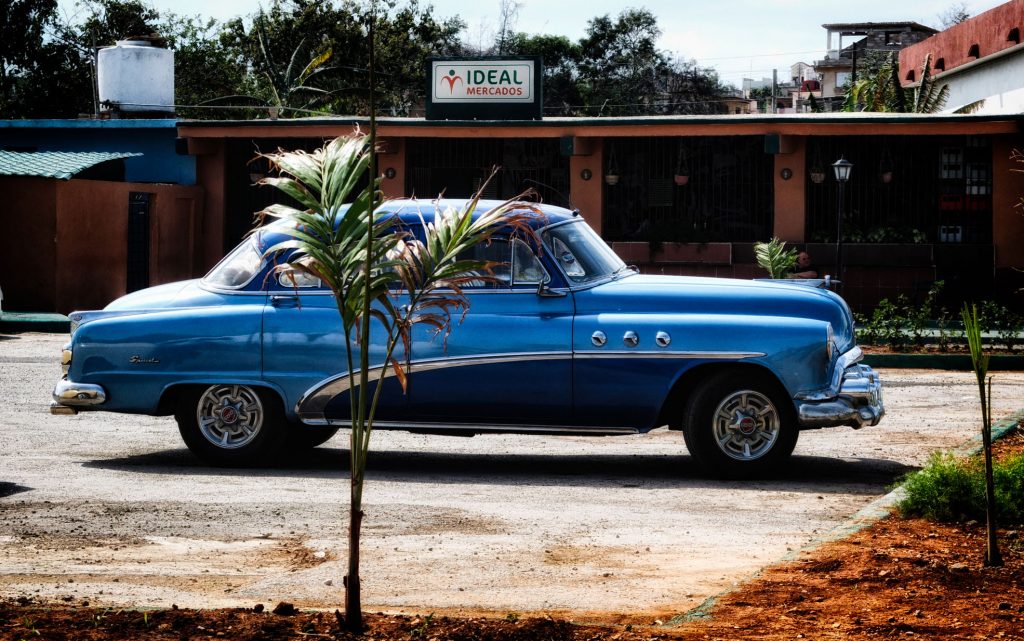
70 thousand of the 150 thousand cars registered back in 1956 are still traveling around Cuba, mostly in Havana. More than 60 years later, the fact that almost 50 per cent remains functioning must be a world record. In terms of city landscape, surely it is a one-of-a-kind motion show.
As you drive around Cuba, you’ll see men hunched over cars, repairing engines and fixing exhaust systems. The country lacks replacement parts and in some cases the necessary tools for fixing the vehicles. Locals are extremely crafty and adept in their repairs. Quite simply, Cuban ingenuity has kept these old American cars on the road. Mechanics find ways to use imperfect parts and keep the things running.
In some cases, Cubans have even had to create materials from scratch to keep their car alive. Russian cars – usually Ladas and Volgas – are dissected into their useful parts. Hood ornaments are sometimes handmade from scrap metal. Cuban mechanics are truly the wizards of the automotive world.
Sometimes they ask relatives living at Florida to buy original parts in the United States and send them to Cuba. Cubans started a few years ago the business of buying original parts in the States. Certain companies are still manufacturing parts and components for classic models, and then import them into the island.
Can I buy a classic car from Cuba?
American car enthusiasts are chomping at the bit to get their hands on classic cars in Cuba. A law from 2010 prevents foreigners from exporting cars from Cuba. Within Cuba, Cuban classic cars can be bought by Cubans and foreigners who are permanent or temporary residents.
If you think these cars are cheap, it is not the case. An old Soviet car may cost 10 thousand dollars. American cars start at 30 thousand and go up to 100 thousand, depending on the condition.
Still, some American collectors may be interested in purchasing Cuban cars in order to own a piece of Cuban history. If the embargo were lifted, the Cuban auto market would be flooded with replacement parts and repair manuals. This would be the most significant result that lifting the embargo could have on the car culture in Cuba. Old cars could be repaired properly and be kept on the roads for more decades to come.
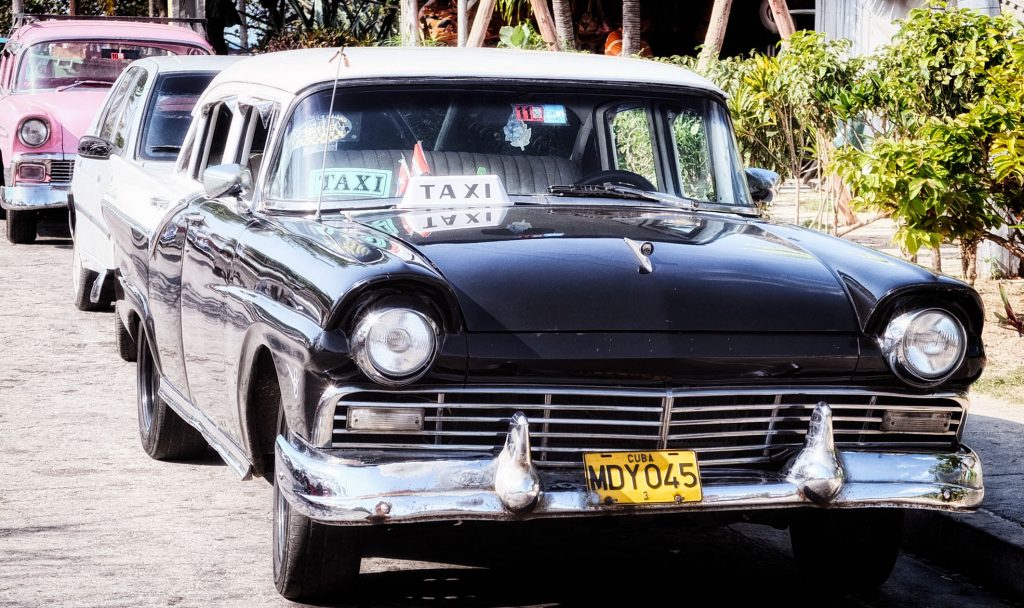
We recommend you read The 18 most gorgeous classic cars we saw on the streets of Havana on Business Insider.
Cuba Private Travel offers a specialized tour to visit a vintage car workshop. In a vintage open top classic, you will visit a private company specialized in their restoration and upkeep. For more information, check our website.
Havana and beyond
The elite of Cuba old cars consists of two groups. On the one hand, those with chromed vivid colors and almost perfect bodies that amaze tourists at Havana. Some may be modified, and some have not been modified and keep original parts, seats and decoration details. These are the minority, a small 5-10 per cent of all classic cars running in Cuba today. They have been carefully preserved by their proud and persevering owners.
Many of the taxis in Cuba are also classic cars. These vehicles tend to be in much worse condition than the cars for tourists, and usually transport locals. Traveling in these taxis offers travelers another interesting look into the classic car culture in Cuba. You’ll see the wear and tear over the years and the impressive ways that still have them running. If mechanics is your interest, ask your driver to tell you about his car. Chances are he’ll be proud of the crafty ways that he has managed to keep his car on the road.
The visuals of travelling the roads of Cuba in a vintage car are widely popular with luxury travel agencies. However, at Cuba Private Travel we do not recommend it. Our contacts in every province and mayor towns can organize local tours in beautiful vintage cars. Cuban rural roads, and even stretches of highway, are not in the bets condition. Though people have the perception there are no new cars in Cuba. Modern cars are coming from Europe and Asia. For long rides outside Havana we organize modern vans, jeeps, or a deluxe Mercedes Benz. Will this be the end of the road for classic cars in Cuba?
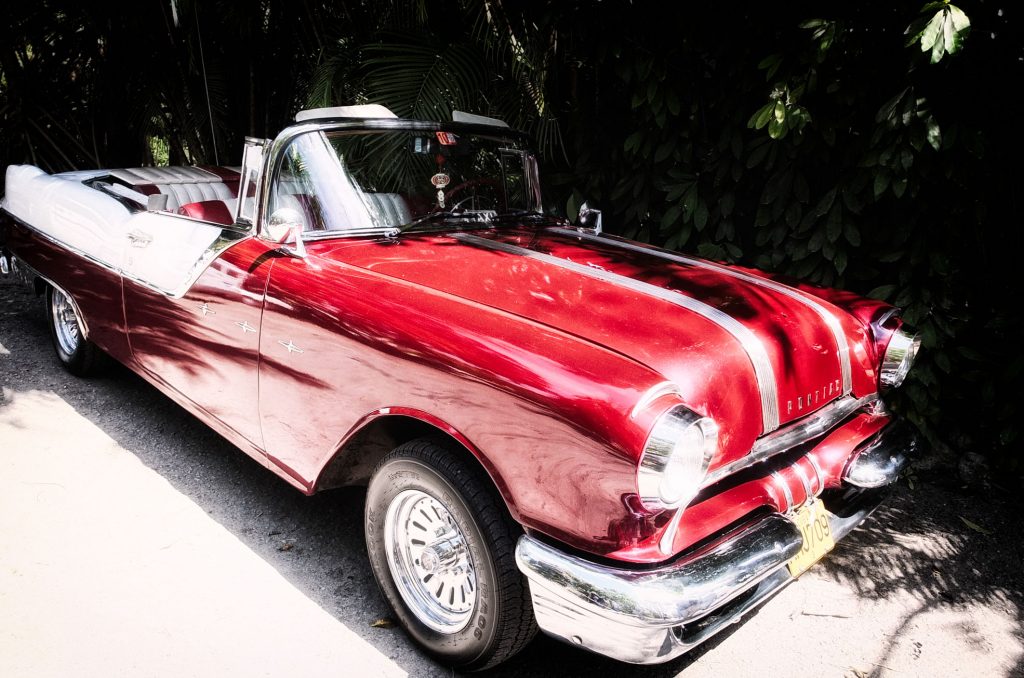
Safe travel to Cuba post COVID19
Cuba´s active screening, clinical management and safety protocols have been exemplary. The pandemic is now dwindling for confirmed cases. Health, hygiene and social distancing protocols have been in place. Hotels and all staff working in tourism already have the training in the industry standards for this new post-COVID19.
However, items like hand sanitizer or disinfectant wipes were never available in Cuban stores even before the COVID19 pandemic. Do not forget to bring your own supply. The common form of hand sanitizer in every venue offering public services in Cuba is a chlorine and water solution (hipoclorito).
Cuba Private Travel offers a myriad options when it comes to enjoying Cuban classic cars. Over the COVID19 quarantine period, our drivers have detailed their rolling jewels, and fine-tuned them.
Classic, or vintage American cars, are an intrinsic part of Cuba culture. They are as much of an icon as cigars and Che Guevara. Cuba Private Travel can tailor your holiday around them. Your luxury holiday in Cuba will not be postcard-perfect without your photo in one of these beautiful beasts. So while you’re here, ride in a Cuban car: it’s a gorgeous living piece of Cuban history.
